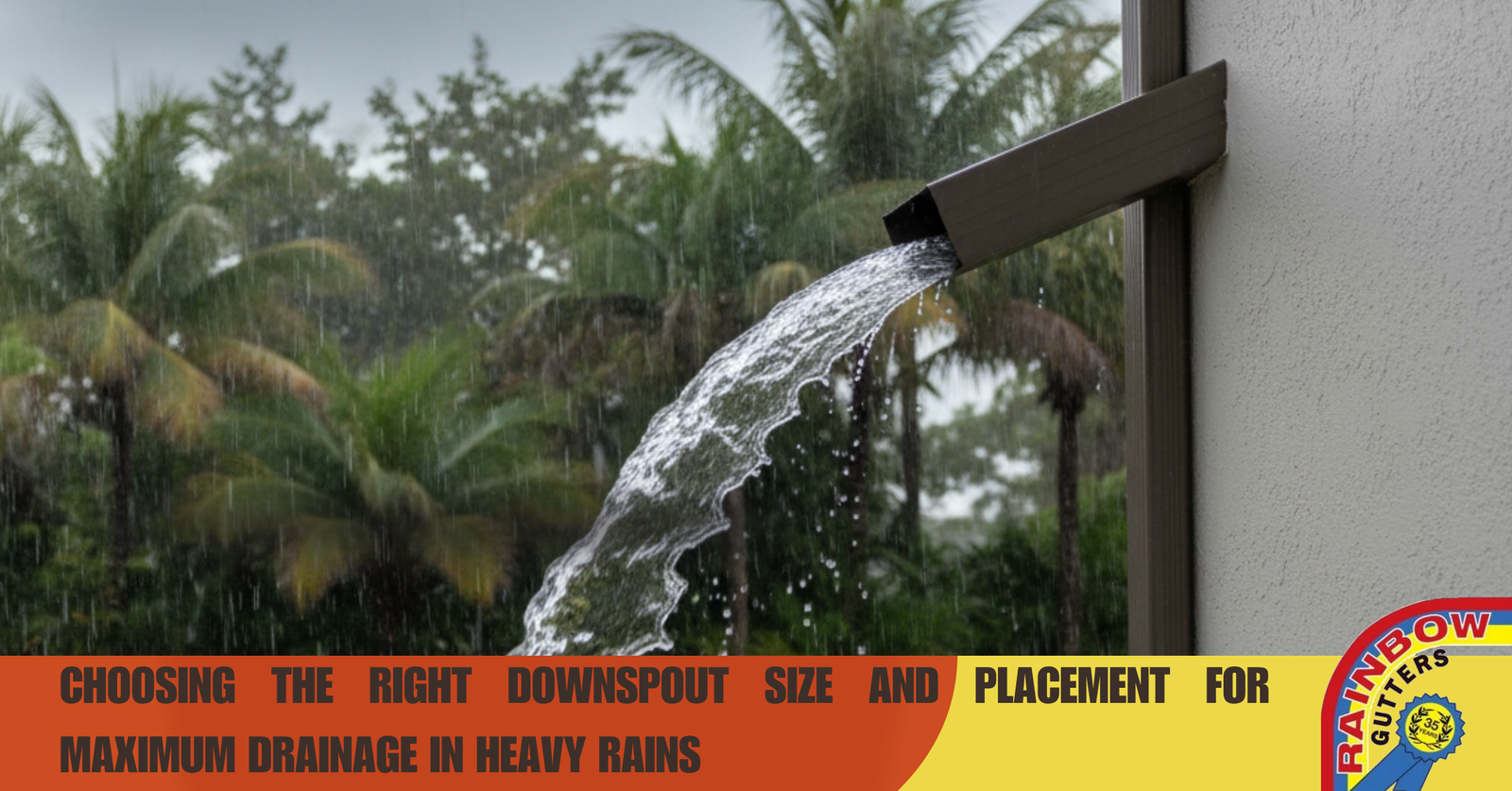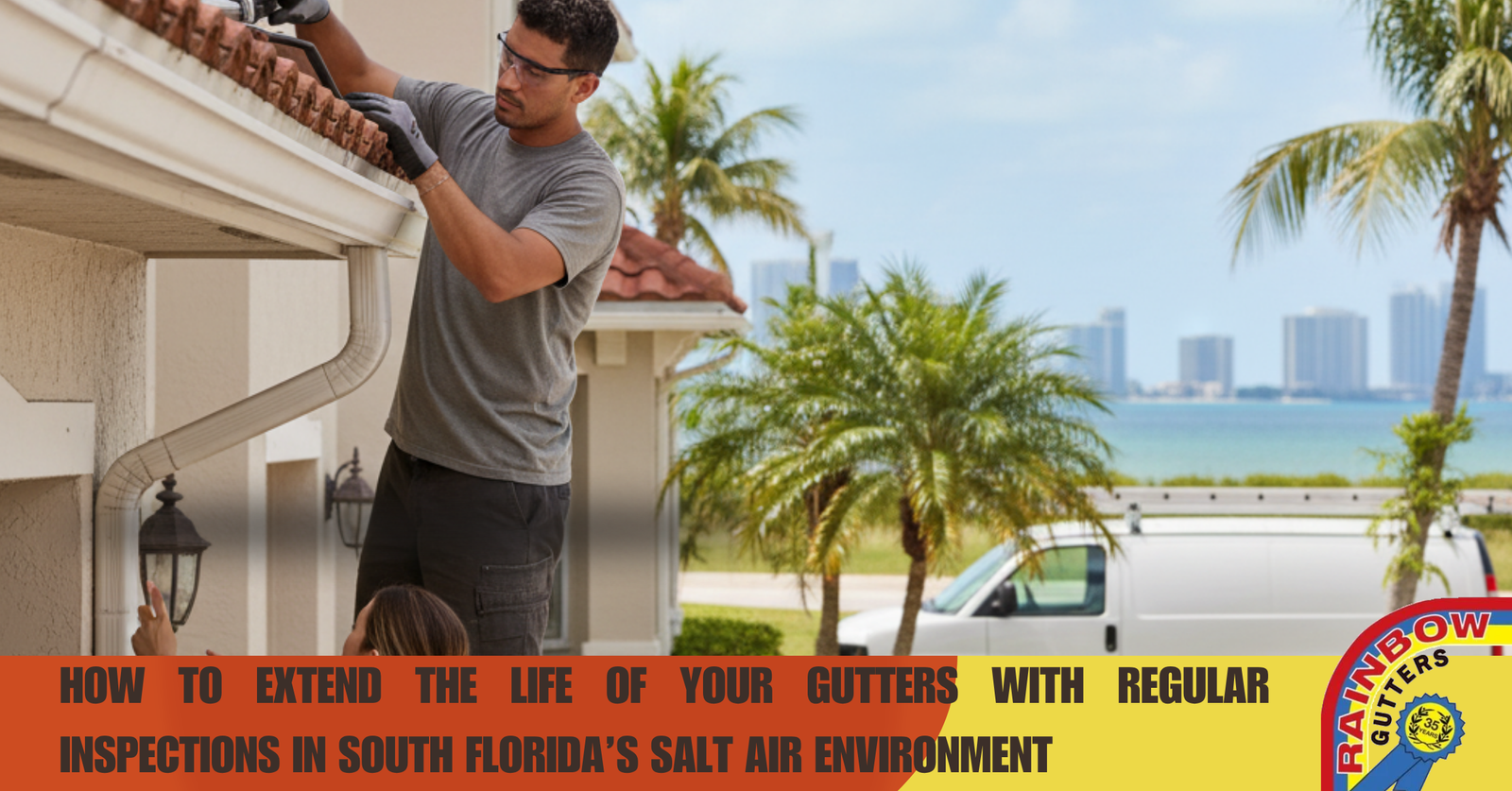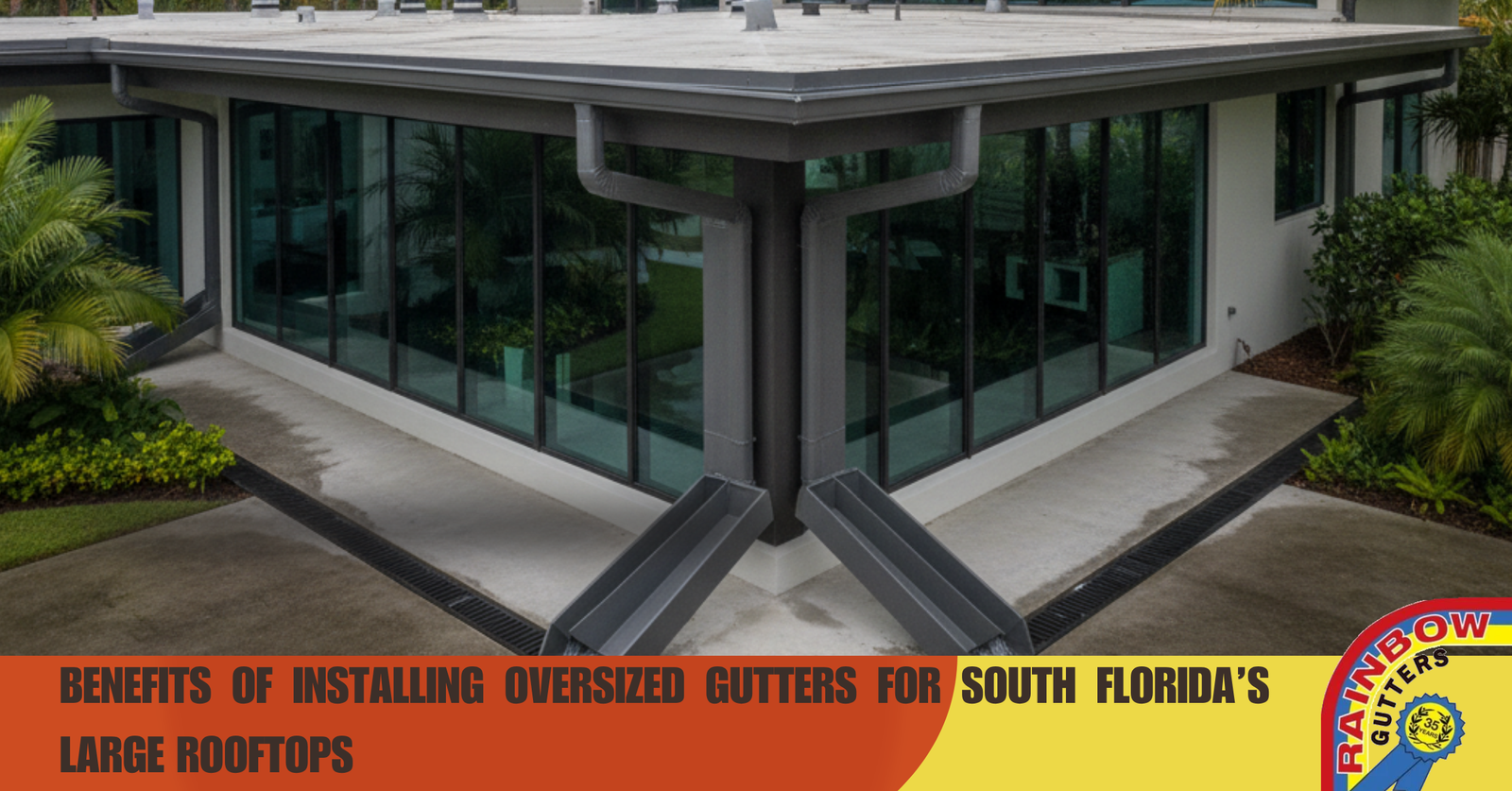In South Florida, where heavy rainfall and tropical storms are part of life, your gutter system plays a crucial role in protecting your home. Gutters channel rainwater safely away from your roof and foundation, but when they overflow, the damage can be extensive and expensive. From stained walls to foundation cracks, gutter overflow can silently deteriorate your property over time.
If you’re a South Florida homeowner, recognizing the early signs of water damage caused by gutter overflow is the best way to protect your home’s structure and value. Here’s what to look for and how professional gutter maintenance can help you avoid costly repairs.
1. Understanding Why Gutter Overflow Happens
Before identifying damage, it’s important to understand what causes gutters to overflow in the first place.
Common culprits include:
- Clogged gutters filled with leaves, twigs, and debris.
- Improper gutter pitch or alignment that prevents smooth water flow.
- Inadequate downspout capacity for South Florida’s heavy rains.
- Broken seams or loose brackets that disrupt water direction.
Even a small obstruction can force water to spill over the sides instead of draining properly, sending water directly toward your home’s exterior and foundation.
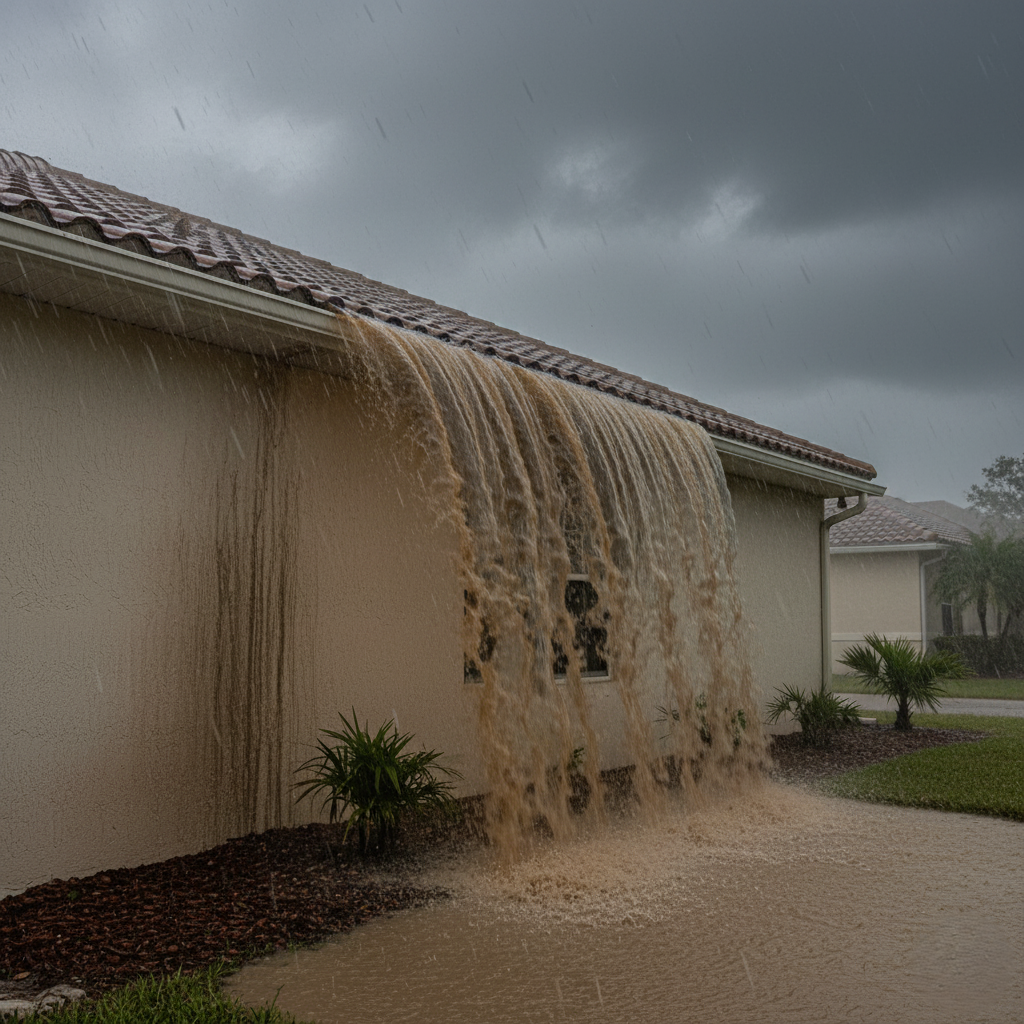
2. Signs of Gutter Overflow on Your Roof and Fascia
The first signs of overflow damage usually appear on your roof edges and fascia boards (the long, horizontal boards beneath your roofline).
Look for:
- Peeling paint or discoloration on the fascia and soffits.
- Water streaks along the sides of your gutters.
- Rotting wood under the roof eaves.
If you notice sagging gutters or water pooling near the roofline, that’s a clear indication that water is escaping where it shouldn’t.
3. Exterior Wall Stains and Cracks
When gutters overflow repeatedly, water cascades down your exterior walls, leading to visible damage such as:
- Brown or dark streaks on stucco or siding.
- Cracking or bubbling paint.
- Efflorescence, a white, chalky residue left by evaporated water.
Over time, this trapped moisture can seep inside your walls, weakening insulation and drywall. In humid South Florida, this moisture can also promote mold growth, which spreads rapidly in warm, damp environments.
4. Water Pooling Around the Foundation
One of the most serious results of gutter overflow is foundation damage. When water isn’t properly diverted away, it collects at the base of your home, soaking into the soil and causing it to expand and contract.
Warning signs include:
- Puddles are forming near your home after rain.
- Shifting soil or uneven ground near your foundation.
- Small cracks are appearing in concrete or brick.
If left unchecked, this can compromise your foundation’s stability, a major concern for homeowners in flood-prone areas of South Florida.

5. Basement or Crawl Space Dampness
Even homes with good drainage can suffer from basement or crawl space dampness if gutters overflow regularly. Water that pools around the exterior eventually finds its way into underground areas.
Common signs include:
- A musty or mildew smell in your basement.
- Damp walls or condensation on pipes.
- Mold appears on stored boxes, furniture, or insulation.
Professional gutter maintenance and waterproofing can significantly reduce this risk, ensuring your home stays dry even during South Florida’s rainy season.
6. Damaged Landscaping and Erosion
Overflowing gutters don’t just harm your home; they also wreak havoc on your landscaping. When water gushes over the edges, it can erode soil, displace mulch, and damage plants near your foundation.
If you notice:
- Bare soil patches near your home.
- Washed-out garden beds.
- Pooling water around flower beds or walkways.
…it’s likely your gutters are failing to direct water properly. Installing downspout extensions or splash blocks can help distribute rainwater more safely into your yard.
7. Interior Water Damage Indicators
Water damage from gutter overflow doesn’t always stay outside. Sometimes, it travels inside through cracks or leaks in the walls, leading to:
- Water stains on ceilings or upper walls.
- Bubbling or peeling paint inside your home.
- Mold growth behind wallpaper or drywall.
If you see any of these signs, it’s important to schedule a professional inspection immediately. South Florida’s humidity makes it easy for mold to thrive, and unchecked moisture can quickly become a serious health hazard.
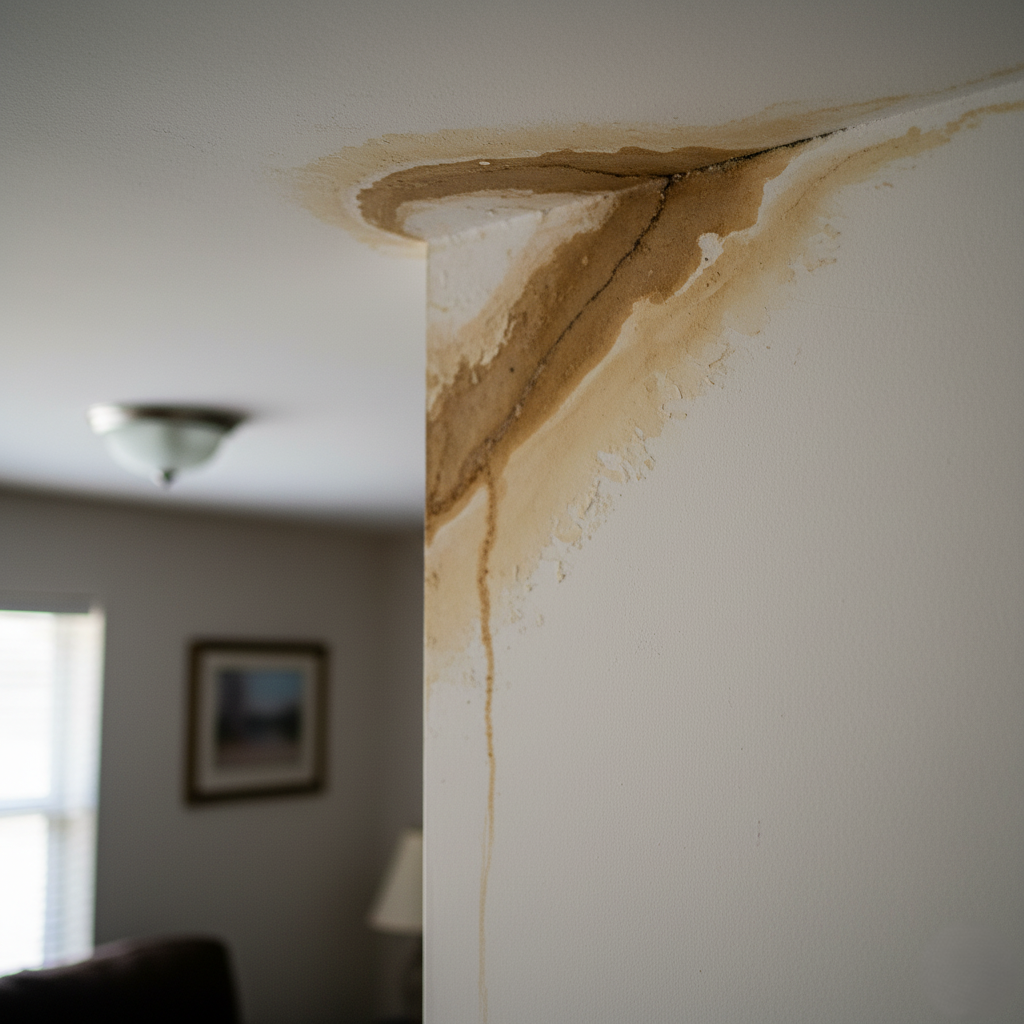
8. Preventing Gutter Overflow and Water Damage
The best way to prevent gutter-related water damage is through routine professional maintenance. Experts recommend:
- Cleaning gutters at least twice a year, more often during storm season.
- Inspecting and sealing gutter joints.
- Checking that downspouts extend at least 5–10 feet from your home.
- Installing gutter guards to prevent clogs from leaves and debris.
A professional gutter cleaning company in South Florida can also identify problem areas before they lead to costly repairs, ensuring your home remains safe, dry, and protected year-round.
9. Why South Florida Homeowners Should Act Quickly
With the region’s heavy rainfall, high humidity, and hurricane risk, delaying gutter maintenance can lead to major water intrusion problems. What starts as a small overflow can quickly escalate into foundation damage, roof leaks, or mold infestations.
Professional gutter services not only clean your system but also inspect for cracks, improper slopes, and drainage inefficiencies, giving you peace of mind before the next storm season hits.
Call to Action: Protect Your South Florida Home from Gutter Overflow Damage
Don’t wait for visible signs of water damage to take action. Schedule a professional gutter inspection and cleaning service today to keep your South Florida home dry, sturdy, and mold-free. Our experts specialize in identifying overflow risks and ensuring your drainage system works efficiently, even during the heaviest rains.
Call now to book your appointment and safeguard your home before the next downpour.



